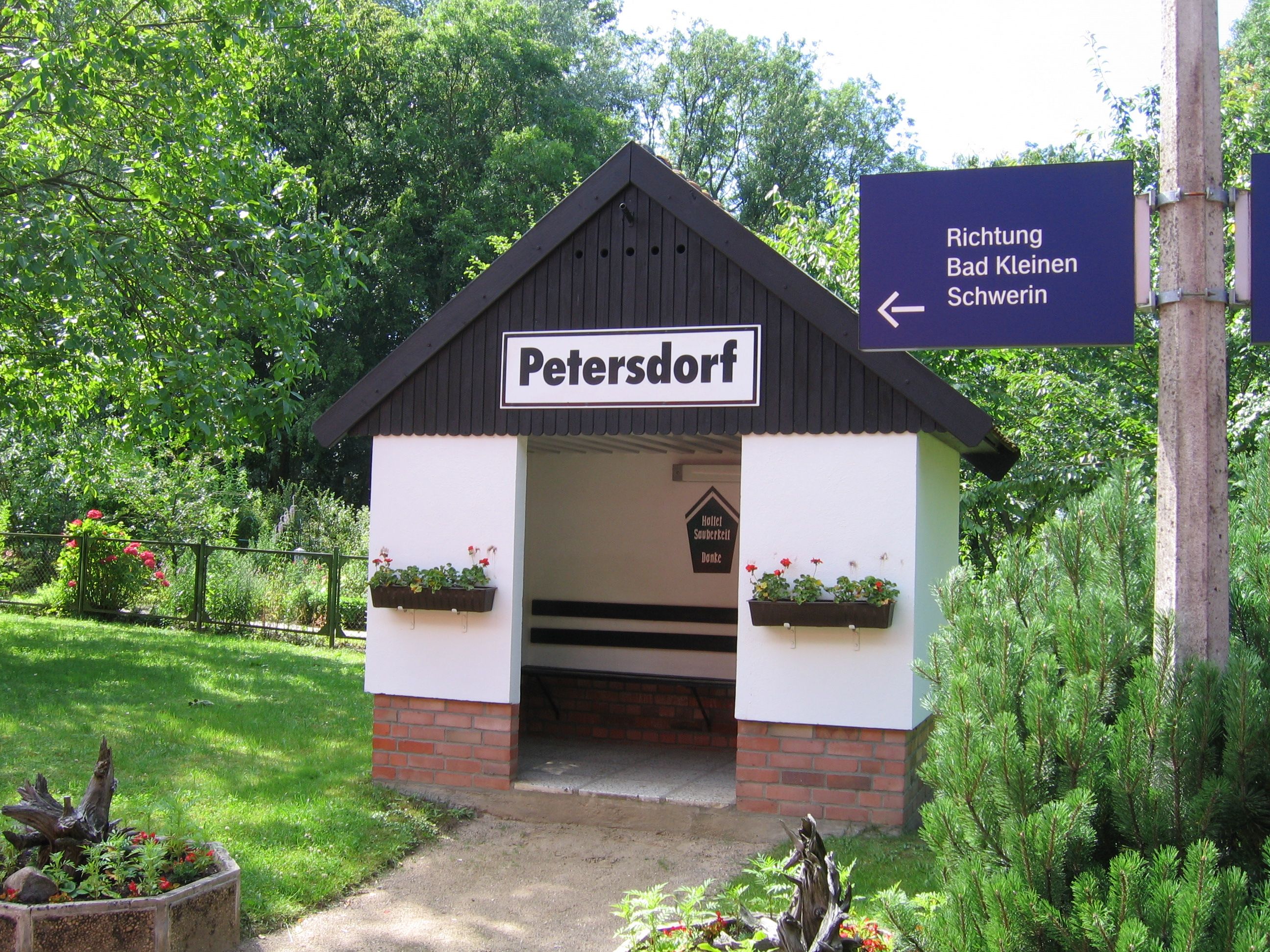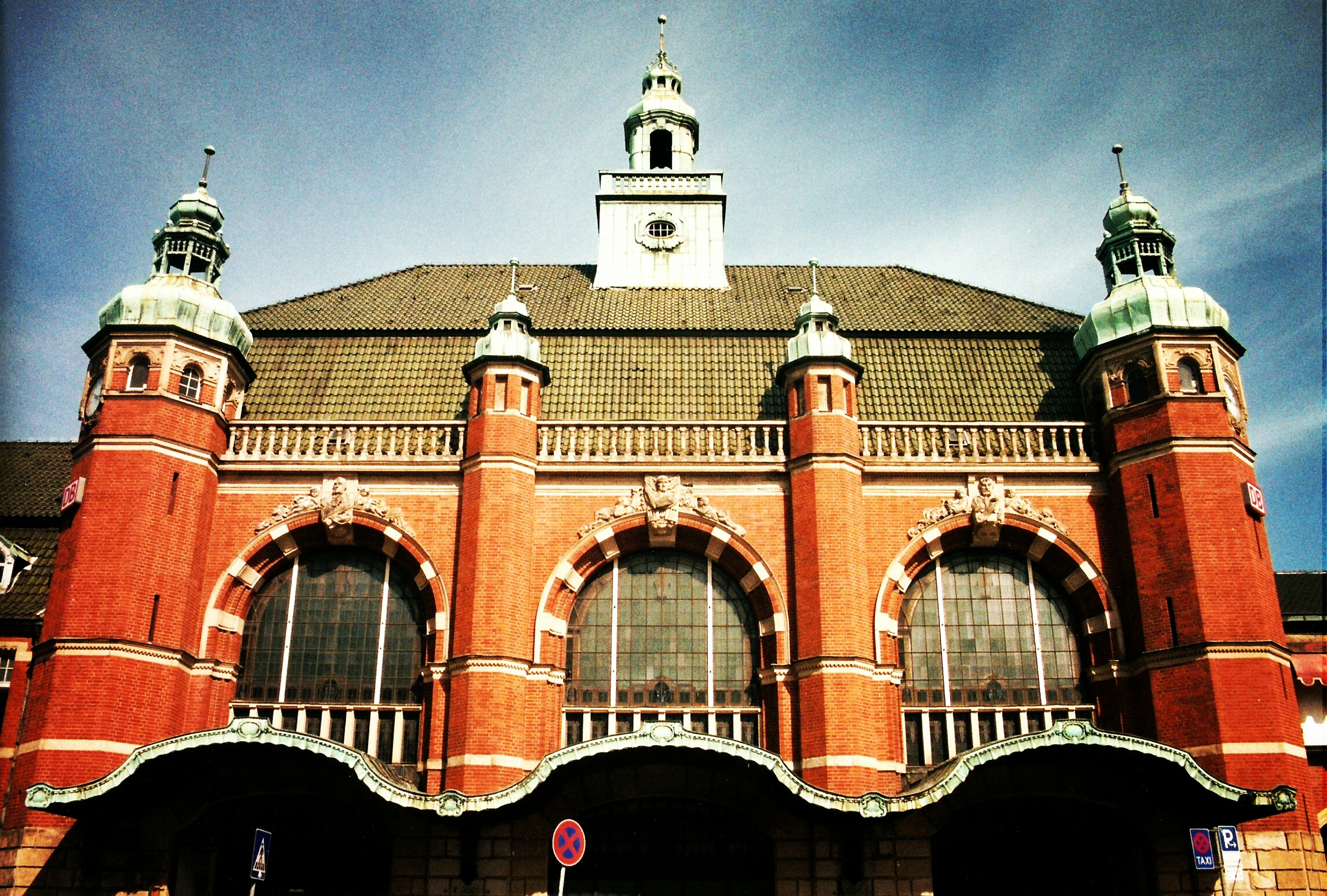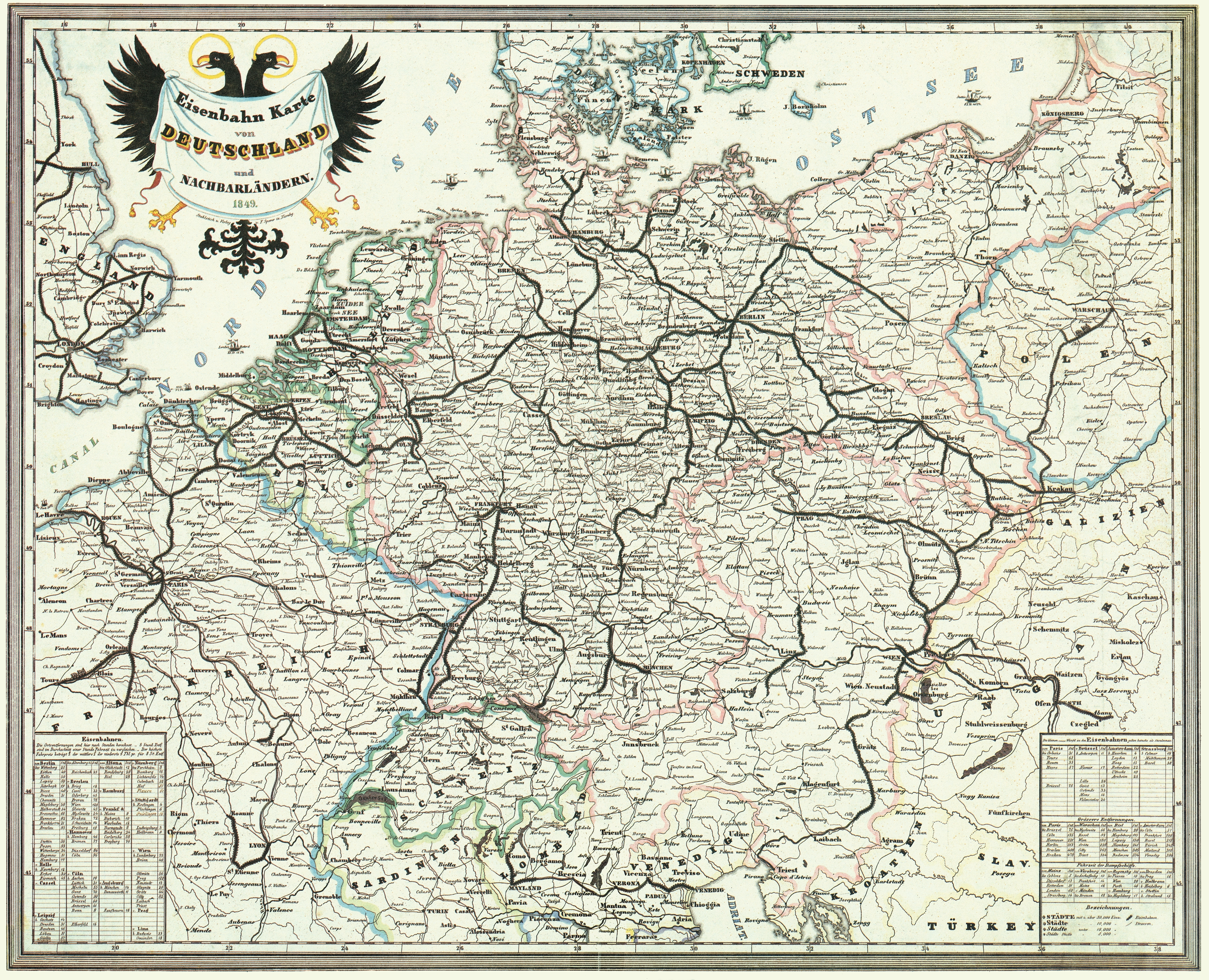|
Ludwigslust–Wismar Railway
The Ludwigslust–Wismar railway is an electrified railway in the German state of Mecklenburg-Vorpommern. The Ludwigslust–Bad Kleinen section of the line is double track. The line was opened in 1848, by the Mecklenburg Railway Company (german: Mecklenburgische Eisenbahngesellschaft) and is one of the oldest railways in Germany. History Before 1945 The Berlin–Hamburg line, opened in 1846, was the first railway passing through the Grand Duchy of Mecklenburg-Schwerin. Immediately afterwards Mecklenburg-Schwerin began work on a link from Hagenow to Schwerin, which was opened on 1 May 1847. On 12 July 1848, the line was extended to Wismar. In 1850, the Bad Kleinen–Rostock line was opened from Bad Kleinen station to Rostock. In 1888 a connection was opened from Holthusen to Ludwigslust on the Berlin–Hamburg line. Trains now ran from Schwerin to Wittenberge and on to Magdeburg and Berlin on this line. Internally the railways have long considered the Ludwigslust–Wismar l ... [...More Info...] [...Related Items...] OR: [Wikipedia] [Google] [Baidu] |
15 KV AC Railway Electrification
Railway electrification systems using at are used on transport railways in Germany, Austria, Switzerland, Sweden, and Norway. The high voltage enables high power transmission with the lower frequency reducing the losses of the traction motors that were available at the beginning of the 20th century. Railway electrification in late 20th century tends to use AC systems which has become the preferred standard for new railway electrifications but extensions of the existing networks are not completely unlikely. In particular, the Gotthard Base Tunnel (opened on 1 June 2016) still uses 15 kV, 16.7 Hz electrification. Due to high conversion costs, it is unlikely that existing systems will be converted to despite the fact that this would reduce the weight of the on-board step-down transformers to one third that of the present devices. History The first electrified railways used series-wound DC motors, first at 600 V and then 1,500 V. Areas with 3 k ... [...More Info...] [...Related Items...] OR: [Wikipedia] [Google] [Baidu] |
Lübeck–Bad Kleinen Railway
The Lübeck–Bad Kleinen railway is a single-track, non-electrified main line between the German states of Schleswig-Holstein and Mecklenburg-Vorpommern. Its construction was started by the Lübeck-Kleinen Railway Company (german: Lübeck-Kleinener Eisenbahn-Gesellschaft) and, after that company's bankruptcy, it was completed and opened by the Friedrich-Franz Railway (''Friedrich-Franz-Eisenbahn''). Operation and history In the 1850s, the two grand duchies of Mecklenburg-Schwerin and Mecklenburg-Strelitz were planning an east–west route through their territory. This would connect in Lübeck to the Lübeck–Büchen line with Kleinen on the Hagenow–Wismar line and run over the existing Bad Kleinen–Rostock railway to Bützow and continue to Güstrow and Neubrandenburg. From there it would run via Strasburg over the modern Polish border to Szczecin (then called ''Stettin''). While the middle section was intended to be a state railway, the western section from Bad Kleinen t ... [...More Info...] [...Related Items...] OR: [Wikipedia] [Google] [Baidu] |
Haltepunkt Petersdorf
A railway stop is a spot along a railway line, usually between stations or at a seldom-used station, where passengers can board and exit the train. While a junction or interlocking usually divides two or more lines or routes, and thus has remotely or locally operated signals, a station stop does not. A station stop usually does not have any tracks other than the main tracks, and may or may not have switches (points, crossovers). The exact definition depends on national legal and operational provisions, which is why ' are usually classified as less important access points, which are often - but not necessarily - poorly accessible to passengers. Germany In Germany, a (abbreviation: ) is a railway facility at which passengers can board or leave trains, i.e. an access point for travellers. In contrast to a ', a ' does not necessarily have railroad switches. There are exceptions, however, if it is locally connected to another service point. The important operational difference ... [...More Info...] [...Related Items...] OR: [Wikipedia] [Google] [Baidu] |
List Of The First German Railways To 1870
List of the first German railways to 1870 with German railways ordered by date of the commissioning the first phase of construction. For context see History of rail transport in Germany. Maps References * * {{DEFAULTSORT:Germany railways History of rail transport in Germany Lists of firsts ... [...More Info...] [...Related Items...] OR: [Wikipedia] [Google] [Baidu] |
Mecklenburg Railway Company
The Mecklenburg Railway Company (german: Mecklenburgische Eisenbahngesellschaft) was founded in 1845 to build a railway line from Hagenow to Rostock and to Güstrow, now in the German state of Mecklenburg-Vorpommern. It was nationalised in 1873 and combined with the Grand Duchy of Mecklenburg Friedrich-Franz Railway. History The planning of the Prussian Berlin–Hamburg line from 1841 inspired the Grand Duchy of Mecklenburg-Schwerin to develop projects for its own network. On 25 February 1846, three companies founded in the previous year, the ''Schwerin-Wismar Railway Company'' (''Schwerin-Wismarsche Eisenbahn-Gesellschaft''), the ''Hagenow-Schwerin-Rostock Railway Company'' (''Hagenow-Schwerin-Rostocker Eisenbahn-Gesellschaft'') and the ''Güstrow-Bützow Railway Company'' (''Güstrow-Bützower Eisenbahn-Gesellschaft''), combined to form the ''Mecklenburg Railway Company''. On 10 March 1846 the Company received a concession to build a railway from Hagenow via Schwerin Schwerin ... [...More Info...] [...Related Items...] OR: [Wikipedia] [Google] [Baidu] |
Bad Kleinen
Bad Kleinen (until 1915 Kleinen) is a municipality in the Nordwestmecklenburg district, in Mecklenburg-Vorpommern, Germany. It is located on the north bank of the Schweriner See. Bad Kleinen is part of the Hamburg Metropolitan Region. Geography The municipality is located on the north bank of the Schweriner See, the fourth largest lake in Germany, and about half-way between the state capital Schwerin and Hanseatic city of Wismar, and close to Lübeck. The famous German Philosopher and Mathematician Gottlob Frege (*8 November 1848 Wismar – †26 July 1925 Bad Kleinen) lived in Bad Kleinen. In his honor every year during Spring, the people of Nordwestmecklenburg make a walking tour between Wismar (Frege's Birthplace) and Bad Kleinen. The current mayor of Bad Kleinen is Joachim Wölm. History During police action on 27 June 1993 German federal police officer Michael Newrzella and the Red Army Faction The Red Army Faction (RAF, ; , ),See the section " Name" also known a ... [...More Info...] [...Related Items...] OR: [Wikipedia] [Google] [Baidu] |
Ludwigslust
Ludwigslust () is a central castle town of Mecklenburg-Vorpommern, Germany, 40 km south of Schwerin. Since 2011 it has been part of the Ludwigslust-Parchim district. Ludwigslust is part of the Hamburg Metropolitan Region. The former royal residential town is known for its rich heritage, especially the famed Ludwigslust Palace, known as ''Versailles of the North''. History In 1724 Prince Ludwig, the son of Frederick, Duke of Mecklenburg, decided to build a hunting lodge near a small hamlet called Klenow. Later, after his succession to the Dukedom, this became his favourite residence and he named it accordingly ''Ludwigslust'' ("Ludwig's pleasure/desire"). In 1765 Ludwigslust became the capital of the duchy in place of Schwerin. The town was enlarged by a residential palace (the castle). This situation continued until 1837, when Grand Duke Paul Friedrich returned the capital status to Schwerin. The Wöbbelin concentration camp—sometimes referred to as ''Ludwigslust ... [...More Info...] [...Related Items...] OR: [Wikipedia] [Google] [Baidu] |
Wismar Station
Wismar (german: Bahnhof Wismar) is a railway station in the town of Wismar, Mecklenburg-Vorpommern, Germany. The station lies on the Ludwigslust–Wismar railway and Wismar–Rostock railway and the train services are operated by Deutsche Bahn. History After construction of the Schwerin–Wismar railway, a station was needed at the terminus. The chosen site offered convenient access to the port of Wismar. By the end of 1847, the first buildings were built, two sheds for materials and a kyanizing works. Later a roundhouse, a carriage shed, a tool shed and a coke store and a coke oven were added. It was estimated that the construction of the planned entrance building would cost about 28,500 Thalers. When the railway line was inaugurated in 1848, the roundhouse had been completed, there was also a cattle ramp and a large turntable. By 1857 the carriage shed was used as an entrance building and goods shed. There was a station forecourt and a promenade that ran from Lindeng ... [...More Info...] [...Related Items...] OR: [Wikipedia] [Google] [Baidu] |
Dorf Mecklenburg Station
Dorf Mecklenburg station is a railway station in the municipality of Dorf Mecklenburg, located in the Nordwestmecklenburg district in Mecklenburg-Vorpommern, Germany Germany, officially the Federal Republic of Germany (FRG),, is a country in Central Europe. It is the most populous member state of the European Union. Germany lies between the Baltic and North Sea to the north and the Alps to the sou .... References {{Authority control Railway stations in Mecklenburg-Western Pomerania Buildings and structures in Nordwestmecklenburg ... [...More Info...] [...Related Items...] OR: [Wikipedia] [Google] [Baidu] |
Petersdorf Station
Petersdorf station was a railway station in the ''Petersdorf'' part of the municipality of Dorf Mecklenburg, located in the Nordwestmecklenburg district in Mecklenburg-Vorpommern, Germany Germany, officially the Federal Republic of Germany (FRG),, is a country in Central Europe. It is the most populous member state of the European Union. Germany lies between the Baltic and North Sea to the north and the Alps to the sou .... History The ''Petersdorf'' stop was abandoned for the timetable change in December 2012, as extensive expansion measures would have been necessary for continued operation. References {{reflist, 30em Railway stations in Mecklenburg-Western Pomerania Buildings and structures in Nordwestmecklenburg Railway stations closed in 2012 2012 disestablishments in Germany ... [...More Info...] [...Related Items...] OR: [Wikipedia] [Google] [Baidu] |





